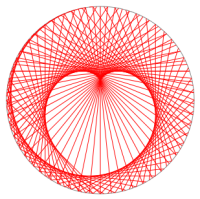Sudoku is a very interesting puzzle, and it is very easy to get familiar with the rules of the game. I always like to compare sudoku with number theory, they are easy to be understood but can be hard to solve. Fermat's Last Theorem, an easily understood problem even by middle school students, took mathematians 358 years to solve it completely. Solving sudoku puzzles can take even longer: it is proven that solving sudoku puzzels is an NP-complete problem! However, classical 9x9 sudoku puzzles are still feasible using backtracking algorithm. We are not going to talk about how to solve sudoku puzzles here though, we are trying to sovle another problem: detect grids in images containing sudoku puzzles.
To make the problem more concrete, let's make some assumption on the image that contains a sudoku puzzle:
- The image only contains one sudoku puzzle
- The sudoku puzzle is the largest block in the image
- There is no/little distorsion/rotation of the sudoku puzzle grid
Also in this article, we focus on only simple solutions without heavy image processing. We will use Pillow to read images and convert them to gray scale images, and we use Numpy to manipulate images as arrays. For visualization, we use Matplotlib.
